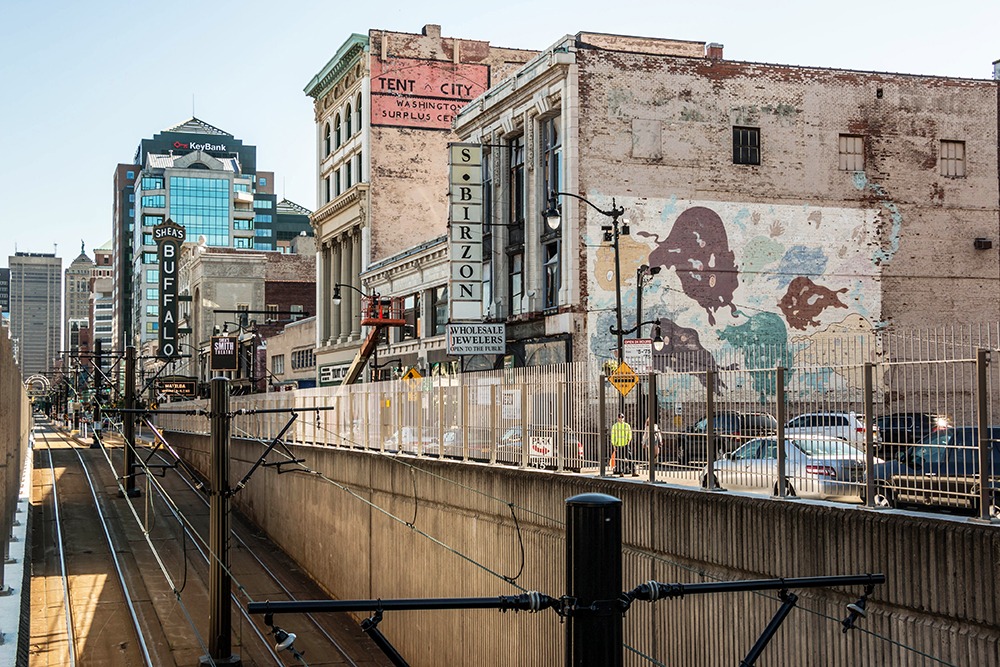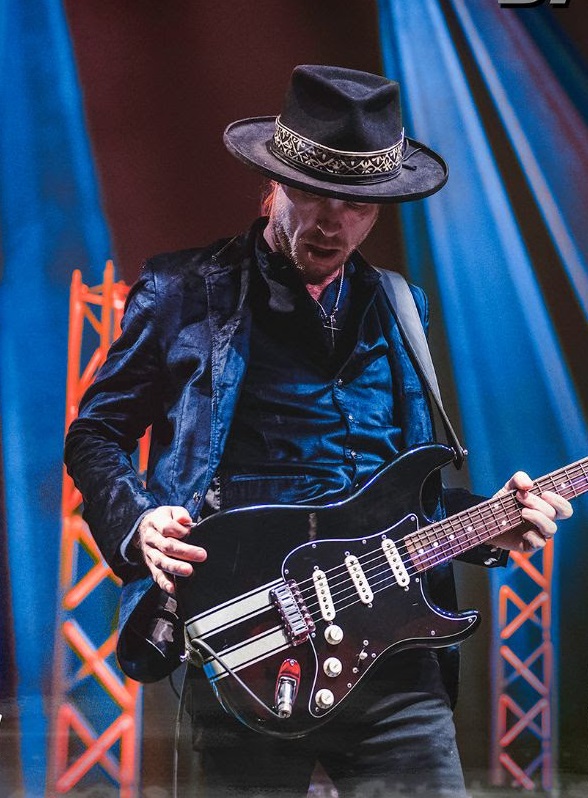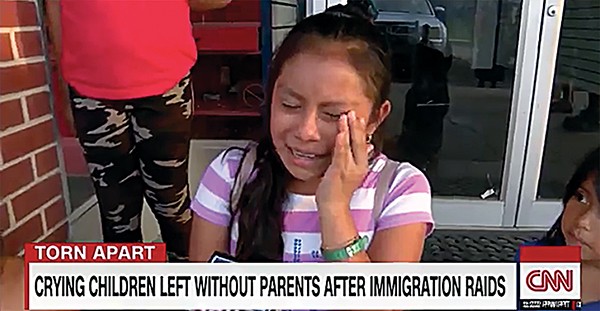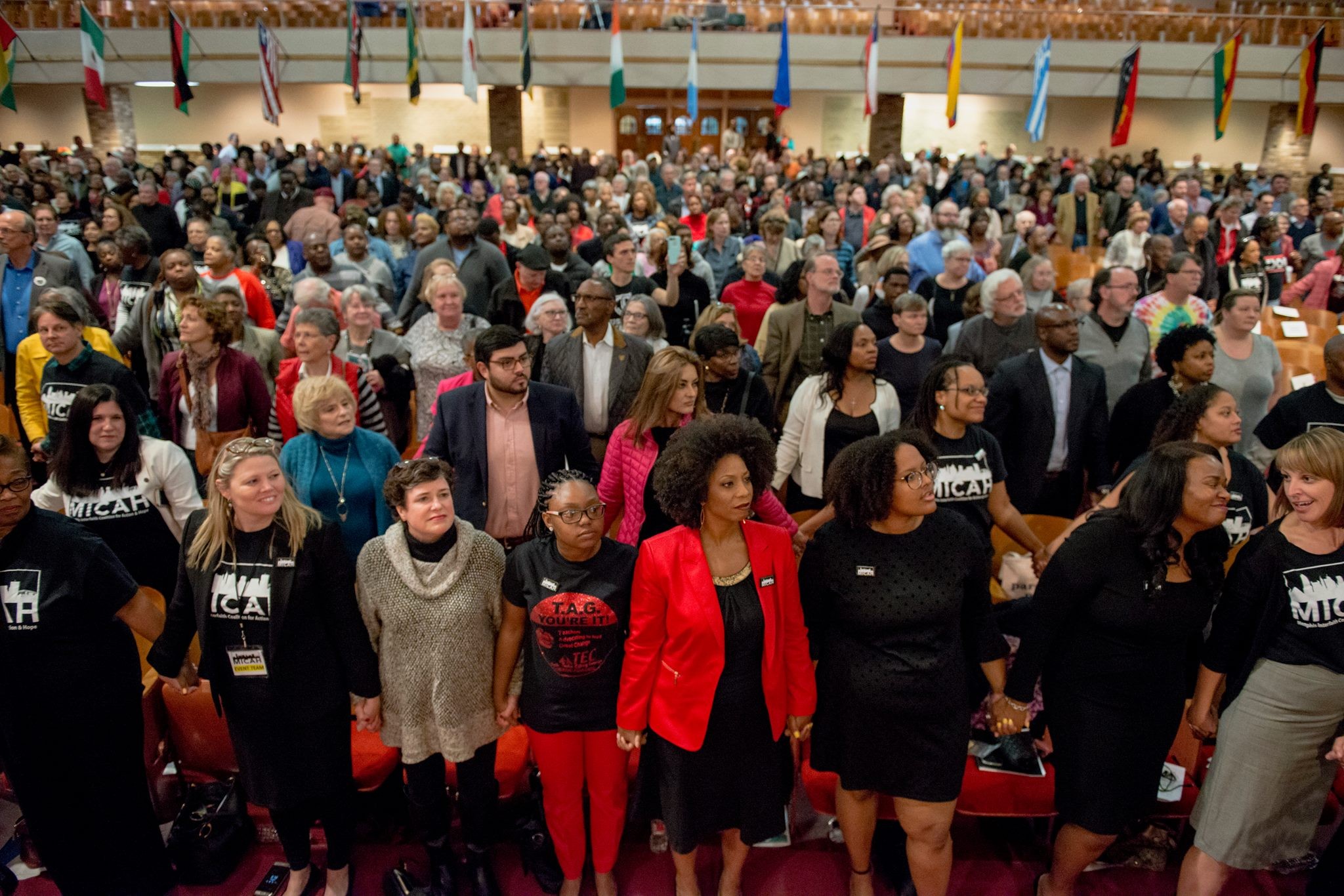Ten people’s lives were stolen May 14, 2022, in a shooting fueled by white supremacy and bigotry. The wounds will never heal, and as a Buffalo native, I want to tell the story of Buffalo’s East Side before May 14th because this massacre isn’t the only tragedy it has faced. This is the product of decades of neglect, policy failures, inaction by those in power, and institutionalized racism.
Buffalo has the oldest housing stock in the nation. Many people live in homes that desperately need repairs and are a century old. Buffalo is also the sixth most-segregated city in the U.S. Decades of national and local policies — from redlining to neoliberalization to gentrification — created the conditions of this massacre. In the ’60s, Robert Moses cut the East Side in half and destroyed Buffalo’s Olmstead designed park system by replacing Humboldt Parkway with the Kensington Expressway. The expressway was seen as necessary because, at the time, white flight was occurring. As Black people began to invest in rooting themselves in Buffalo, white people departed to the suburbs. The continuity of the East Side was permanently ruptured, and in favor of white commuters. The pollution still poisons generations of residents, but they got good news on May 6, 2022: Lawmakers announced over $1 billion in support of an infrastructure project to restore Humboldt Parkway.
In the ’80s, the War on Drugs and policies of broken windows meant that many homes on the East Side were razed under the false pretenses of being suspected drug dens. Some homes were even occupied at the time, and their foundations still sit exposed underneath a layer of weeds that symbolizes a failure to address a racist past. In recent years, development via displacement has become the norm in Buffalo. Gentrifying forces slowly creep into depressed neighborhoods and increase property taxes. Lifelong residents, many living on fixed incomes, are pushed out.
Residents I spoke with during my MA research in Broadway-Fillmore, an East Side neighborhood, told me the story of their fight for a supermarket. The investiture of a supermarket by the powers that be is a blessing for growth, and a sponsorship of a future. A supermarket shows a commitment to care for residents, as all people need affordable, healthy, and accessible food. The Tops on Jefferson Avenue services much of the East Side because it is one of the only commitments to food justice in the area. And still, for some residents, that Tops is a 15-minute drive, or 90-minute bus ride. No matter how people get there, the supermarket’s significance is priceless.
Much of the national media attention has been focused on the Black community in the East Side, and that community has been harmed in ways I will never understand. But I’ve spent enough time in the City of Good Neighbors to know that the community extends well beyond race, religion, sexuality, gender, creed, politics. I have felt the love of people who are welcoming of everyone, including a naïve and green wannabe activist like myself. Buffalo’s East Side boasts a burgeoning immigrant and refugee population. At Public School 31 in Broadway-Fillmore, students speak a combined 24 languages. PS 31 is more cosmopolitan than some schools in New York City!
BIPOC are an important part of Buffalo’s tax base and also the most underserved. These are people who have historically been the subjects of violence by hateful people, and May 14th is not the first instance of violence directed at minorities there. The city is $20 million in debt, and more than $11 million is the result of civil lawsuit settlements with the city and the Buffalo Police Department. The world saw what BPD would do to an elderly white man, Martin Gugino, on June 24, 2020. That violence is enacted on BIPOC in Buffalo every day, and it often goes unseen.
I am pained by the fact that, weeks after this horrific massacre, our country seems to have moved on. And since, there have been more such tragedies. We need to continue talking about the societal ills that produce the conditions in which such hateful acts can occur. The problems that plague Buffalo are not unique — they are the status quo across the U.S. The history of the East Side I’ve shared is a broken record, and it should sound familiar to people here in Memphis. I imagine many Black parents in America had to explain to their children what happened on May 14th in Buffalo because the reality is too real.
There are two reasons people have made their homes on the East Side: They care, and they hope for a better tomorrow. Citizens fought tooth and nail to get a supermarket, and the Tops on Jefferson Avenue became an oasis in a food desert. That place of respite, nourishment, and interaction has been permanently stained. I hope that stain can be overcome, but I also understand that the pain, and the fear induced, cannot be forgotten. We must make sure not to forget, too.
Everyone on Buffalo’s East Side not only lost a loved one on May 14th — they lost a piece of themselves. Those lost were people guiding the future to something greater, and have been working for decades to better the lives of their neighbors. I am left asking myself: How much of ourselves can we lose before we’re damaged beyond repair? Will expressing our hurt ever close wounds, or are we doomed to continually reopen the trauma when the next racist massacre occurs? If we keep shelving necessary and uncomfortable conversations and continue to fail to give those most marginalized in our country a better future, we will only add to an always unfolding tragedy.
Joshua Swiatek moved to Memphis in 2019 and graduated with his MA in anthropology from University of Memphis. He enjoys reading, writing, and reminding people that time is a construct.




 CNN Video
CNN Video  Memphis Interfaith Coalition for Action
Memphis Interfaith Coalition for Action  Ronnie Wu | Dreamstime.com
Ronnie Wu | Dreamstime.com  goir | Dreamstime.com
goir | Dreamstime.com